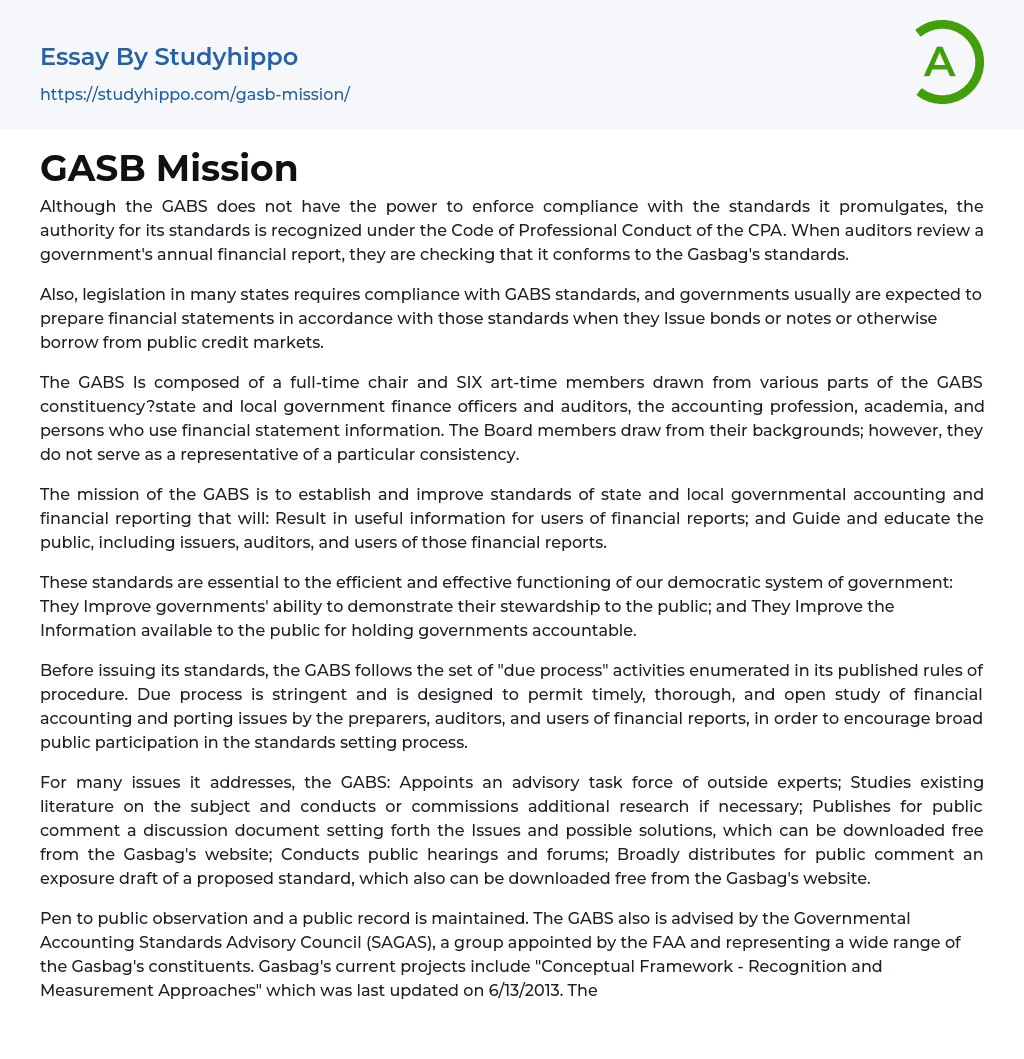While lacking the power to enforce compliance, the Gasbag's standards are recognized by the CPA's Code of Professional Conduct. In auditing a government's annual financial statement, adherence to these standards is verified by auditors.
The GABS is composed of seven members, one full-time chair and six part-time individuals. The members come from various sections of the GABS community, such as state and local government finance officers and auditors, accounting professionals, academics, and users of financial statement information. Each member has a unique background but does not represent any particular group.
The GABS strives to establish and improve accounting and financial reporting standards for state and local governments. This aims to furnish useful information to financial report users, as well as educate the public which includes issuers, auditors, and financial report users.
"justify">
The GABS adheres to a set of "due process" activities outlined in its published rules of procedure prior to releasing its standards. This process is strict and aims to enable preparers, auditors, and users of financial reports to conduct thorough and transparent analysis of financial accounting and reporting matters, with the goal of promoting widespread public involvement in the standards setting process.
The GABS takes on various issues by appointing an advisory task force consisting of outside experts. Research is conducted through studying existing literature and carrying out additional research as required. A discussion document outlining the problem and potential solutions is published for public comment and available for free download on Gasbag's website. Public hearings and forums are also held, with an exposure draft of a proposed standard widely distributed for public feedback, which can also be downloaded for free o
the Gasbag's website.
The aim is to establish standards for identifying information that should be included in financial statements of state and local governments and determining the appropriate measurement methods. This involves developing recognition criteria and considering various measurement concepts, such as initial or remembered amounts, and attributes of the assets or liabilities being measured.
- Accounts Receivable essays
- Auditor's Report essays
- Balance Sheet essays
- Costs essays
- Financial Audit essays
- International Financial Reporting Standards essays
- Tax essays
- Accountability essays
- Cash essays
- Principal essays
- Management Accounting essays
- Internal Control essays
- Accounting Software essays
- Cash Flow essays
- Money essays
- Financial Accounting essays
- Market Segmentation essays
- Supply And Demand essays
- Purchasing essays
- Forecasting essays
- Legacy essays
- Bank essays
- Corporate Finance essays
- Financial News essays
- Financial Ratios essays
- Financial Services essays
- Free Market essays
- Shareholder essays
- Personal finance essays
- Equity essays
- Financial Crisis essays
- Banking essays
- Credit Card essays
- Currency essays
- Debt essays
- Gold essays
- Loan essays
- Enron Scandal essays
- Foreign Exchange Market essays
- Investment essays
- Venture Capital essays
- Stock Market essays
- Retirement essays
- Donation essays
- Net Present Value essays
- Income Statement essays
- Commercial Bank essays
- Debit Card essays
- Deposit Account essays
- Subprime Lending essays




